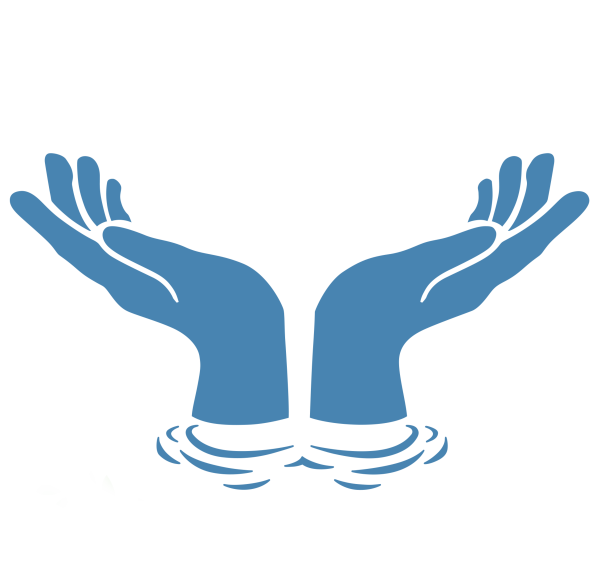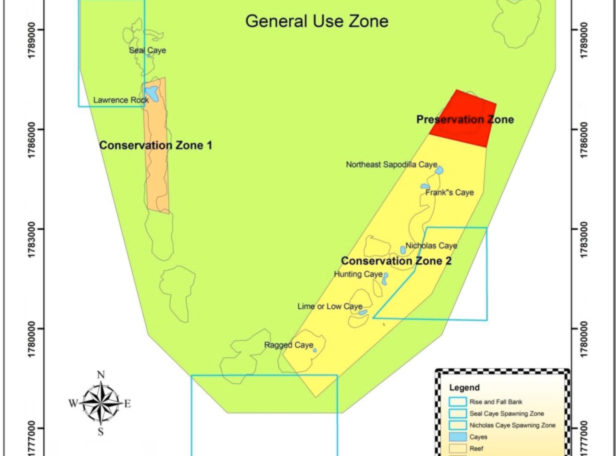SCMR
Sapodilla Cayes Marine Reserve
SCMR is located approximately 36 miles east of Punta Gorda Town, Toledo District, and encompasses the southern-most tip of the Belize Barrier Reef at 16 11’40” to 16 05’00” North Latitude. The eastern and western boundaries of the reserve follow the 100 meter depth contours along the reef. The reserve covers an approximate area of 38,595 acres and includes fourteen sand or mangrove cayes considered to be among the most scenic within Belize; namely, Tom Owens Caye I and II, Northeast Sapodilla Caye, Frank’s Cayes main, east and west, Nicholas Caye, Hunting Caye, Lime Caye, Ragged Caye, Seal Cayes I and II, and 2 unvegitated or ephemeral islands often overtopped by swash. The main focus of the reserve is the Sapodilla Cayes, considered by many to be the most beautiful range of cayes found in Belizean waters. These cayes, together with Seal Cayes, make up approximately 1.6% of the reserve and cover an approximate area of 17.67 hectares.
The marine component consists mainly of submerged sand in shallow water of 3-10 meters; a carbonate pavement on the leeside of the reef crest; the reef crest; Montastrea Reef that dominate the coral component of the Sapodilla Cayes region; and shallow reef which consists of shallow patches of reefs and/or sea grass beds.
The distinctive hook-shaped reef structure forms the end of the Belize Barrier Reef, and is unique within the Caribbean region (Kramer and Kramer, 2002). Here, coral biodiversity is at its highest in Belize, although impacts from increasing visitation and from agricultural runoff from the coastline to the south are thought to be reducing the viability of the coral and its ability to recover following bleaching.
The reef drop-off occurs on three sides, with conditions that have resulted in the establishment of three nationally and regionally important spawning aggregation sites (Nicholas Caye, Rise and Fall Bank and Seal Caye), important for the Nassau Grouper, and for the national and regional viability of several commercial fish species, though the general trend of spawning populations at the aggregation sites is considered to be decreasing.
In keeping with its designation as a Marine Reserve, SCMR is a multiple use area, supporting both commercial fishing and tourism activities. The reserve provides nursery and feeding habitats for at least twenty eight species of international concern, recognized under the IUCN Red list as Critically Endangered, Endangered or Vulnerable (IUCN, 2010), including five species of coral, three species of turtle, thirteen species of fish and the vulnerable West Indian manatee. The Sapodilla Cayes have also historically provided nesting sites for hawksbill, green and loggerhead turtles, critical to the survival of these species within the region. The littoral forest provides an important connectivity point for migrating birds, as they travel south to their wintering areas, whilst the sandy beaches attract both nesting turtles and human visitors.
The Marine Reserve designation is considered to be equivalent to Category IV: – A Habitat/Species Management Area, with active management targeted at conservation through management intervention. In 2009, through much consultation, the zoning of the Sapodilla Cayes Marine Reserve was established under (SI 50 of 2009). A total of four different zones for SCMR were established.
Rules and Regulations
General Use Zone
Designated for recreational use, research and fishing in accordance to the rules and regulations for the marine reserve. No extraction is allowed without prior authorization by the fisheries administrator.
Preservation Zone
No fishing, sport fishing, diving, or any other water activity is permitted. No vessels allowed within this zone except with written permission from the Fisheries Administrator.
Conservation Zone 1
Designated for recreational use only. Scuba diving and snorkeling and non-extractive sport fishing is allowed.
Conservation Zone 2
Designated for recreational use. Catch and release fishing is allowed in this area as well as subsistence fishing with restricted gear types for traditional fishermen only.
Programs
Research and Monitoring
SCMR staff conducts regular monitoring within the marine reseve. Monitoring includes daily visitation census at SCMR, where all visitors and users of the marine and the activities they carry out within SCMR are being recorded. Biological monitoring conducted at SCMR includes; Seagrass Monitoring, Commercial Species monitoring, Lobster and conch closed season surveys, Spawning Aggregation Monitoring, Synoptic Monitoring for Coral and Fish, Lobster morphometric biological monitoring, National Conch surveys, sea turtle monitoring and catch per unit effort (CPUE) data collection.
Surveillance and Enforcement
SCMR staff conducts daily patrols within the marine reserve with focus on the no-take zone to make sure that the rules and regulations of the marine reserve are kept. Since SCMR is a transboundary area for Belize, Guatemala and Honduras, frequent night operations and joint operations or patrols with the Belize National Coast Guard at Hunting Caye are being conducted as well to deter illegal activities within SCMR
Education and Outreach
SCMR staff conducts several presentations to guides and visitors that come to SCMR. The rules and regulations for the marine reserve are explained to them. At present the SCMR visitor center is not to its fullest capacity, however the SCMR management is working to develop the visitor center to be more educational to the general public. The staff continues to educate fishers and other tour guides about reef etiquette and other fisheries regulations, size limits, closed seasons, etc. Several presentations are given by the staff at the visitor center on the history, management of the marine reserve, and the importance of protecting this world heritage site. Brochures are also provided regularly to the general public, and more specifically the SCMR visitors.













